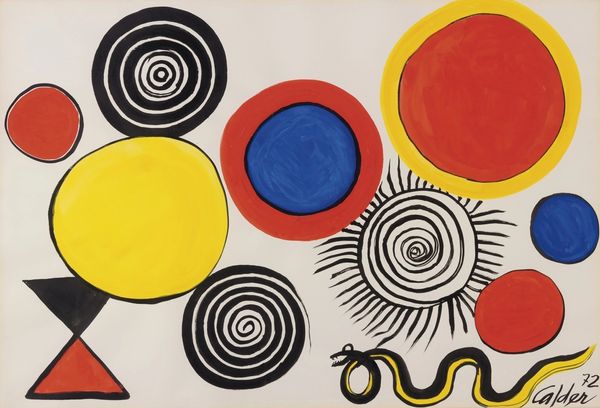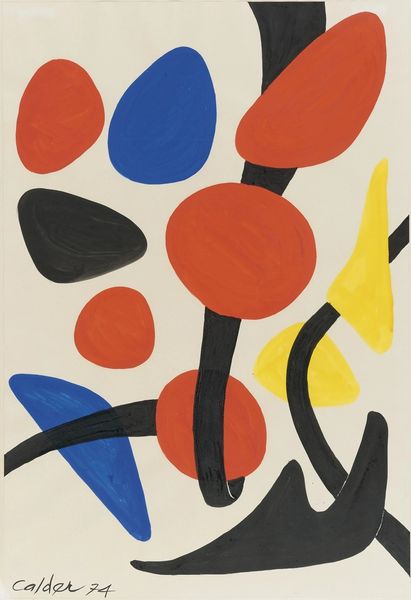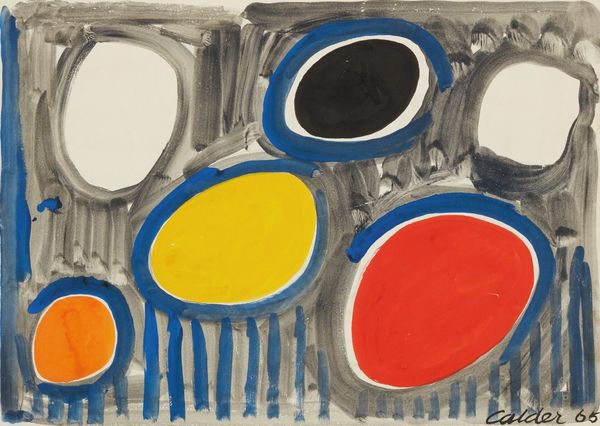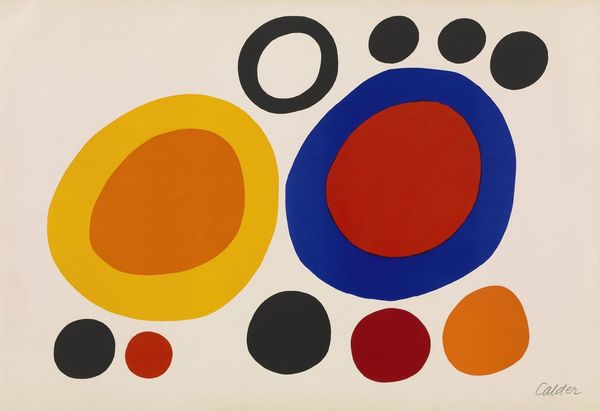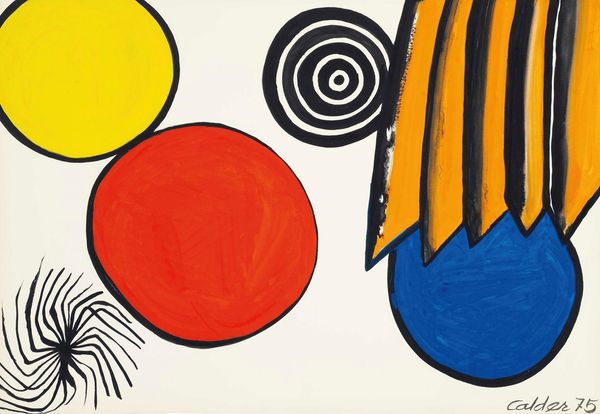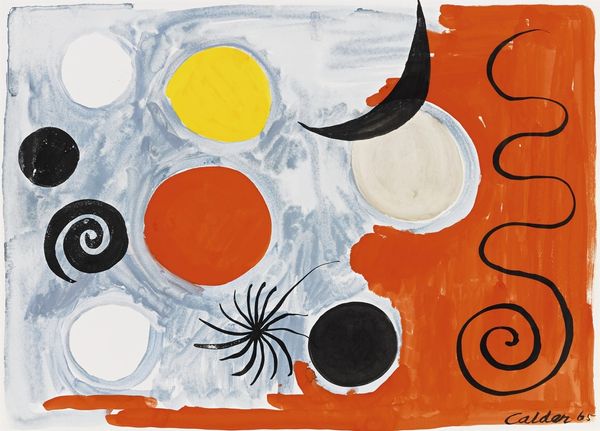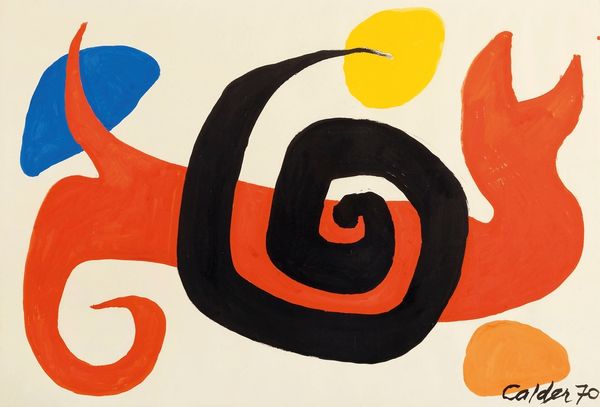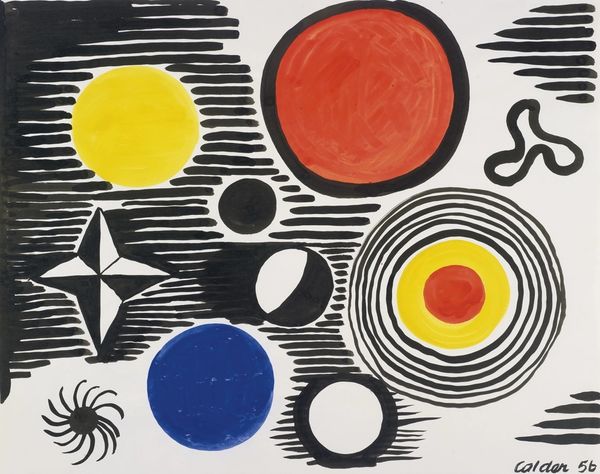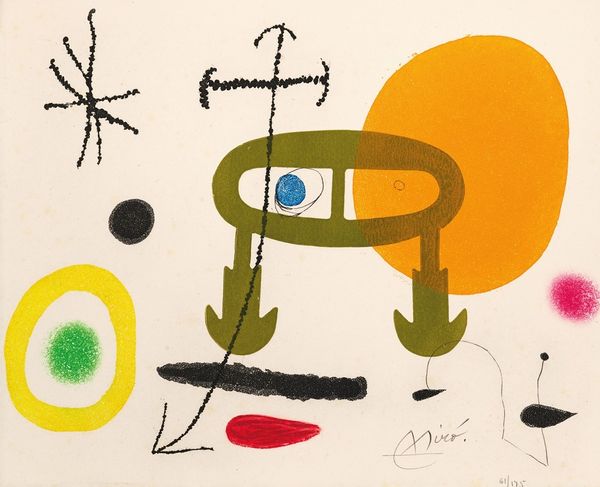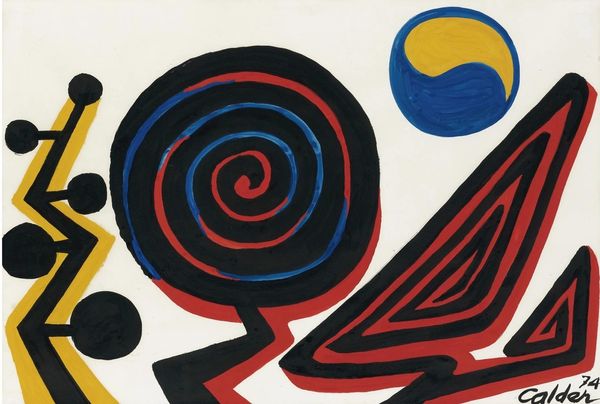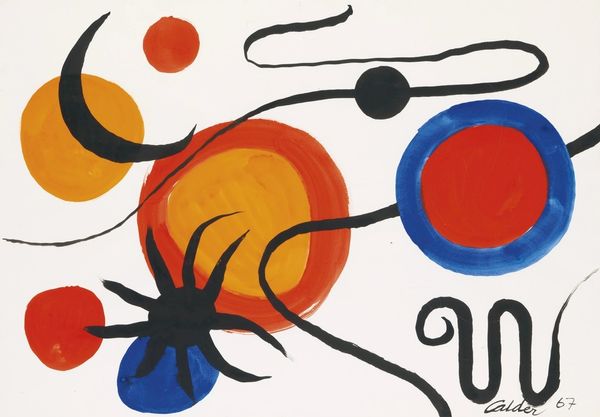
painting, watercolor
#
abstract-expressionism
#
water colours
#
painting
#
hand painted
#
pop art
#
watercolor
#
geometric
#
abstraction
Copyright: Yuri Zlotnikov,Fair Use
Curator: Upon viewing it for the first time, there is something strangely whimsical about this piece. It reminds me of children's building blocks—simple shapes of bright watercolors scattered on a creamy white page. Editor: Let's orient our listeners: this is “Signal Series,” a watercolor from 1962 by Yuri Zlotnikov. Examining its materiality brings up a central tension between this light aesthetic, with its quick gesture, and what the “signal” implies in Soviet history. Curator: Yes, it almost feels subversive, doesn't it? The Soviet emphasis on utilitarianism in tension with abstract art. Editor: Exactly! These aren’t precise technical drawings of industrial production. Rather, we get an interest in material processes. Zlotnikov works with watercolors—which are cheap and readily available but difficult to master—as his method of exploring how to generate signs, like these forms, that speak to a modern world under construction. Curator: Constructed and abstracted, I think! The painting feels less like a directive, more like the feeling *of* being directed. The ambiguity and freedom of the forms suggests a more fluid state. Does that land differently given the artwork’s provenance? Editor: Precisely—we need to consider what abstraction, geometry, and even watercolor *afford* Zlotnikov working in the Soviet context of the early 1960s. What did these means of making mean, what freedoms and constraints might he have been dealing with as he laid down these shapes of color? Curator: I can't help but think of a coded language—maybe the shapes represent feelings and emotions that would’ve been suppressed or controlled. Each daub of color a gesture of defiance? Editor: Interesting thought! Seeing artmaking as a defiant process shifts the question to *how* it resists or asserts itself as valuable. With all these flat rectangles, ovals, and half-circles, one wonders how Zlotnikov negotiated between design, craft, and so-called “high art” with just simple brushstrokes. Curator: I think looking at this painting from the point of view of the act—the labor and intention that went into it—reveals an even deeper appreciation. Editor: Indeed. There is something radical and resourceful about making sophisticated choices with such elementary techniques.
Comments
No comments
Be the first to comment and join the conversation on the ultimate creative platform.



